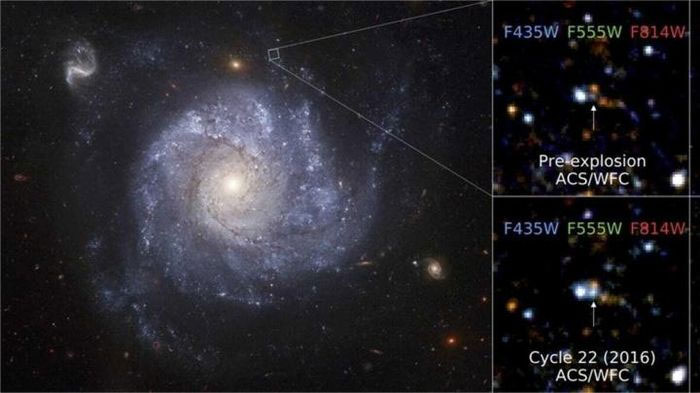A white dwarf star typically accompanies another star and siphons a significant amount of material from it. A supernova explosion occurs when a white dwarf enters the “dying” phase due to excessive material being drawn from its companion star. The additional mass compresses the core of the white dwarf, causing the temperature and density in the core to rise to levels that trigger a fusion reaction. As a result, a supernova explosion occurs.
However, the recently observed white dwarf still exists after the supernova explosion and is even brighter than before.

The white dwarf survives a supernova explosion located 108 million light-years from Earth, in the spiral galaxy NGC 1309, which is three-quarters the size of the Milky Way. (Photo: Reuters)
“We were quite surprised that this star was not destroyed and could survive, becoming even brighter than before the explosion,” said Curtis McCully, a senior astronomer at the Las Cumbres Observatory in California.
McCully explained that the explosion produces radioactive material—the factor that creates the mysterious light of a supernova. Some of this material remains in the “surviving star,” making it brighter.
The white dwarf is located 108 million light-years from Earth, in the spiral galaxy NGC 1309, which is three-quarters the size of the Milky Way.
According to researchers, our Sun will also become a white dwarf in the future—this is the fate of about 97% of the stars in the universe.
“At the end of the life cycle of stars like our Sun or slightly larger, they will exhaust the nuclear fuel in their cores and transform into white dwarfs. During this process, the outer layers of the star shed and become a nebula. The remaining core will form the white dwarf,” McCully stated.
In May 2021, an international team of researchers also used the Hubble Space Telescope to capture the death of a giant star located 35 million light-years from Earth.
Images from Hubble showed this star with a strange yellow color, average temperature, and no hydrogen in its outer layer.
“If a star explodes without hydrogen, it will appear blue—really, really hot. It’s almost impossible for a star to be cold to this extent without hydrogen in the outer layer,” said Charles Kilpatrick, a researcher at Northwestern University in Illinois, USA.


















































